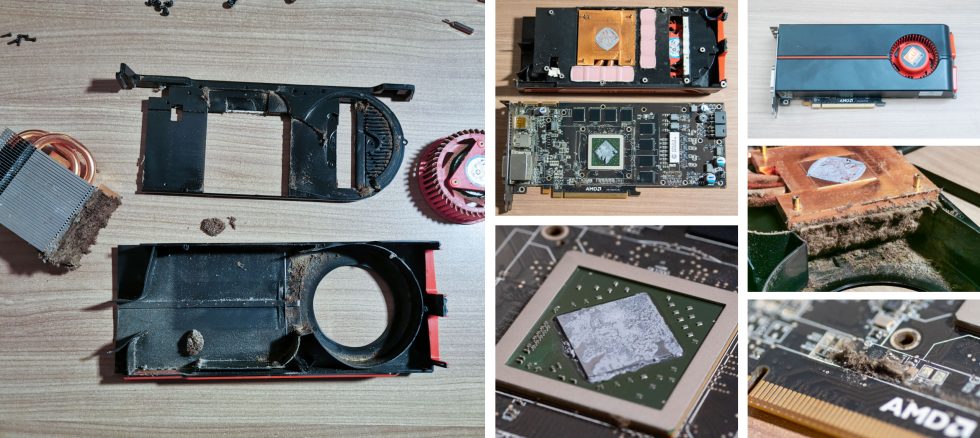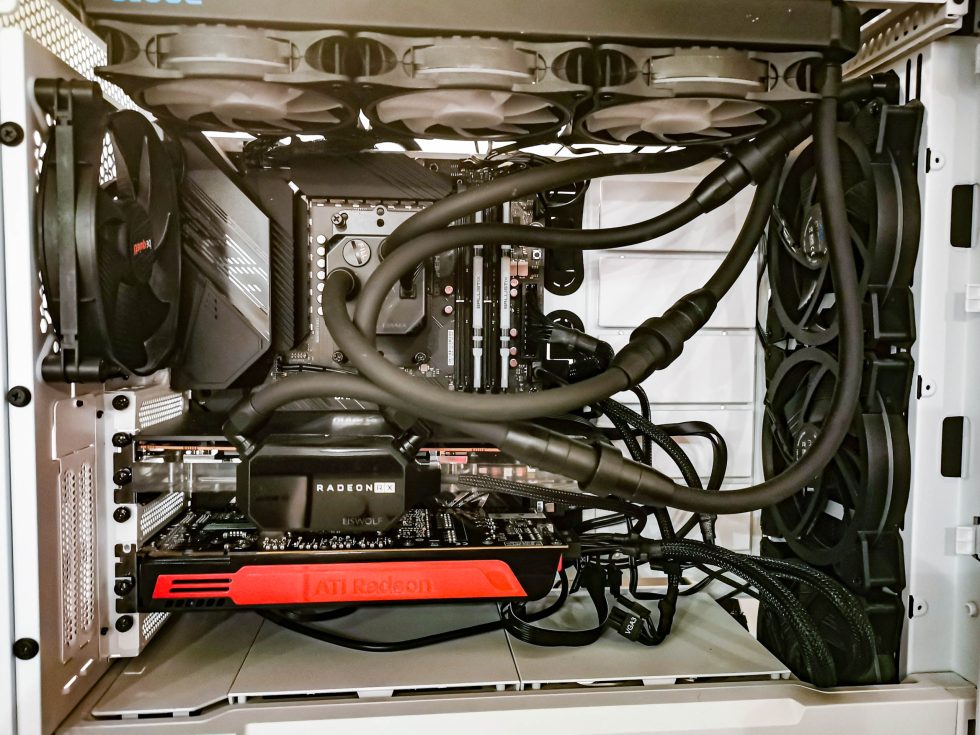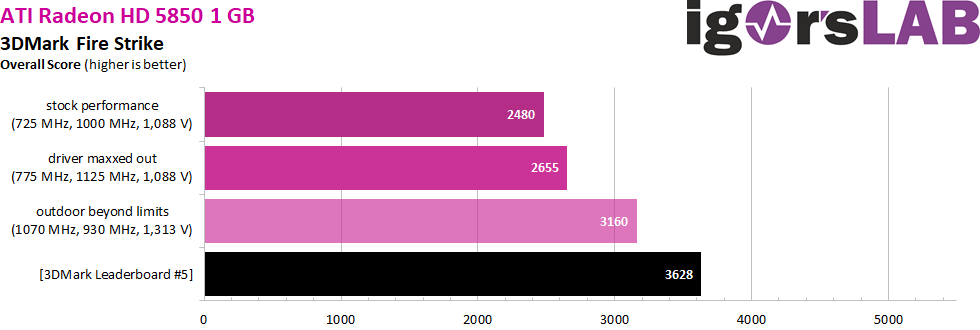At first, I went for an ATI Radeon HD 5850 as a reference model (market launch September 2009), which I found in the mailbox in the afternoon – 20 Euros was my investment. This card design with radial fans, what can you say? My answer would be: What a blessing that we only have axial fans for gaming cards today! Unfortunately, the original packaging is usually gone with such old cards – this card came in a handy freezer bag with zip closure.
However, the first visual inspection does not bode well for this one. Brown mud is already peeking out of the almost iconic radial fan. But anyway, when an old card arrives, it is always disassembled, cleaned and repasted first. Good that I had a FFP2 mask at hand – what such a pandemic is all good for ..
So the dust nest on the cooling block was awesome, this air cooler can’t have worked at all for a long time. At some point, however, the cleaning work is done and the next challenge comes: installation and commissioning – which you wouldn’t expect at first. The hurdle here is the BIOS, UEFI, whatever. While I boot normally as UEFI into an M2 with productive system, I use a Bench system on SSD (SATA) for the wilder games, which I have to boot as CSM with the old, well-hung graphics cards.
Unfortunately, my dark hero BIOS makes it a bit difficult for me, because it does not save all settings under the presets, so that UEFI vs. CSM and the setting of the boot order have to be done separately again and again. In the meantime, I’m quite happy about the CMOS reset button, pressed once, then the bios also understands that I want something. Without the reset, I have experienced several bootloops from which nothing reasonable came out in the end.
So now it’s time for some real tuning! While we can manipulate an (almost) unmanageable number of values via Wattman and MPT on current AMD cards, there are usually only three or four on older cards: GPU clock, VRAM clock, voltage and power. In addition, there are the fans – the usual suspects among the tuning programs do not provide more.
Load case: stock performance
The first thing I usually do is see what the cards do in the benchmarks when I just run them @stock, i.e. don’t touch the settings in the driver. The temperatures on the GPU (sometimes it’s one sensor, sometimes it’s several) and the memory are also interesting. There I can see how the card cools itself with new paste and partly renewed pads. Of course, the 5850 is not particularly challenged with this and achieves 2,480 points in the Fire Strike.
Load case: driver maxxed out
In the next step I try to pull the clock sliders in the driver all the way to the right (‘maxxed out’) and want to see how good the chips are and if they hold up to the various benchmarks at full clock. The 5850 delivers 2,655 points here in the Fire Strike, which is still an increase of a good 7%.
Load case: the sky is the limit!
If that works, then that’s a green light for me to raise the limits for bars and tension further. I also like to take a look at the relevant forums to see what was achieved in overclocking about ten years ago – that’s where I tie in. For overclocking ‘beyond the limits’, two viable ways have proven themselves to me, firstly using MSI Afterburner to take control of the card, or using the (old) Radeon Bios Editor to directly modify the card’s flashable bios. In my experience, sometimes one works and sometimes the other depending on the map. For simplicity’s sake, I always start with the Afterburner and see if that has success.
And, very important: from here on, my computer is outside on the balcony in wintry temperatures around freezing point! The 5850 holds a surprise here, reaching 3,160 points in the Fire Strike, which represents an increase of 27% to the Stock performance. Wow, almost a third more power. I was able to increase the core clock from 725 MHz to 1,070 MHz and the voltage from 1,088 V to 1,313 V with my card. So settings beyond the limits coupled with cold here have once again brought a good push forward.
While indoors (room temperature approx. 22°C) the 5850 starts the benchmarks with a self-regulated fan with 46°C on the GPU, I manage a start value of 8°C at full fan speed and 1°C outdoor temperature. Of course, these are important ingredients of success and can’t be achieved so easily outdoors as indoors in summer. However, the VRAM was conspicuous in this card. First, I pulled it up fully and then later looked at its performance and errors again beyond the limits. Apparently, this VRAM doesn’t pack as much clock at high GPU performance anymore, so I went down to 930 MHz – tested via MrH benchmark. I have also seen in HWinfo that the graphics memory throws gigantic error rates.
In the chart, I also show the score of #5 in the global 3DMark Fire Strike leaderboard (Overall Score, 1 GPU) for comparison. I’m leaving out the top four because their performance is often significant outliers to the top, be it cheaters, be it extreme overclockers with liquid nitrogen or other. With my 3,160 points I was able to conquer 64th place in the Fire Strike Leaderboard (something like the world ranking for this map). Not bad!
PS: all Fire Strike tests reported here were made with default tessellation settings (=activated) – so no tricks!






































13 Antworten
Kommentar
Lade neue Kommentare
Urgestein
Neuling
Urgestein
Neuling
Urgestein
Urgestein
1
Veteran
Neuling
Veteran
Veteran
Mitglied
Urgestein
Alle Kommentare lesen unter igor´sLAB Community →